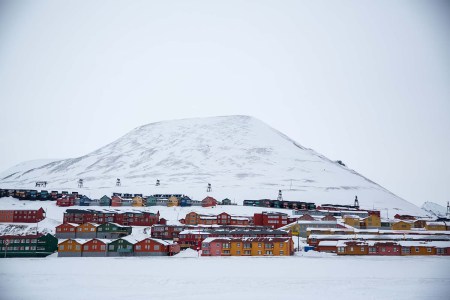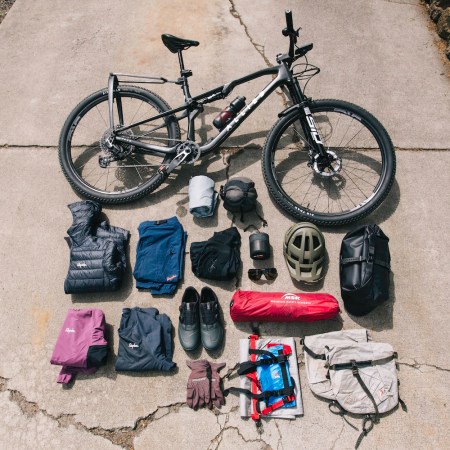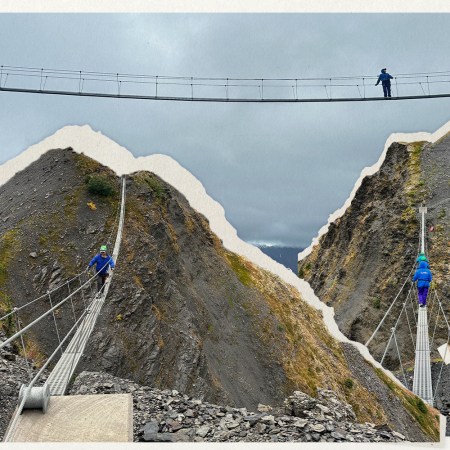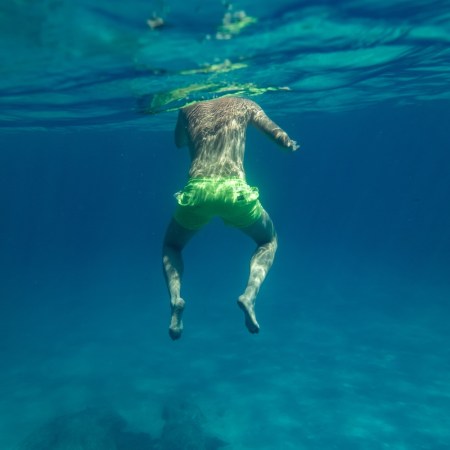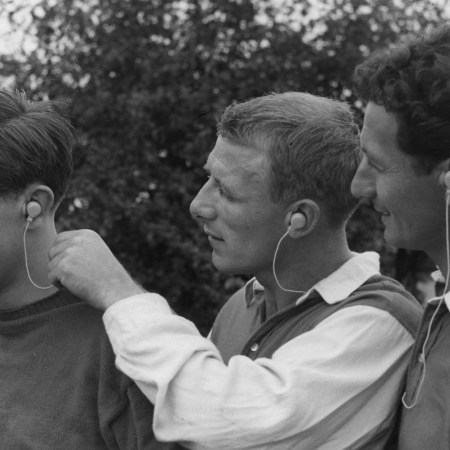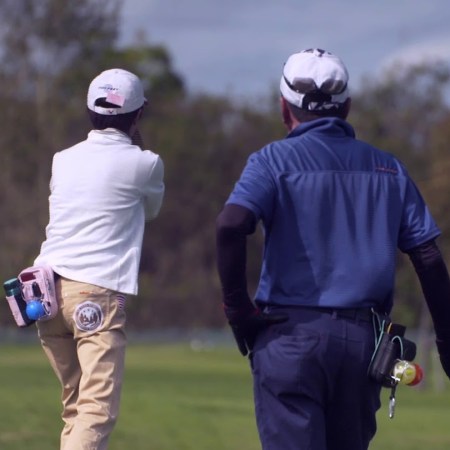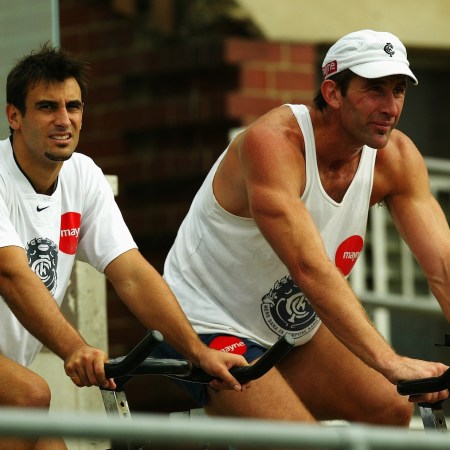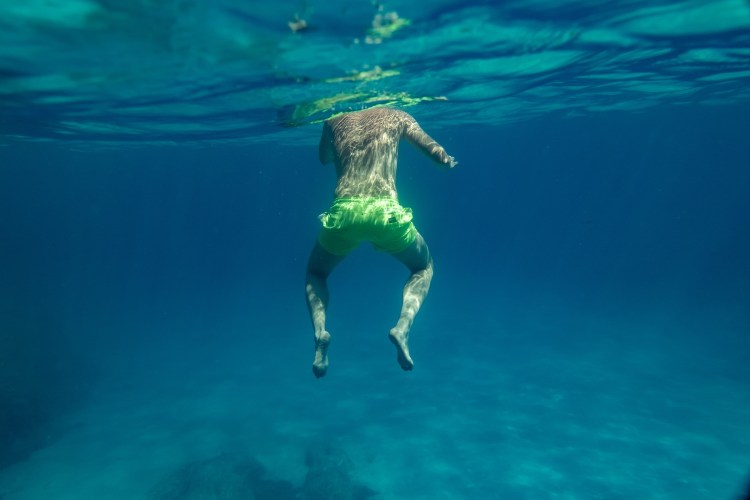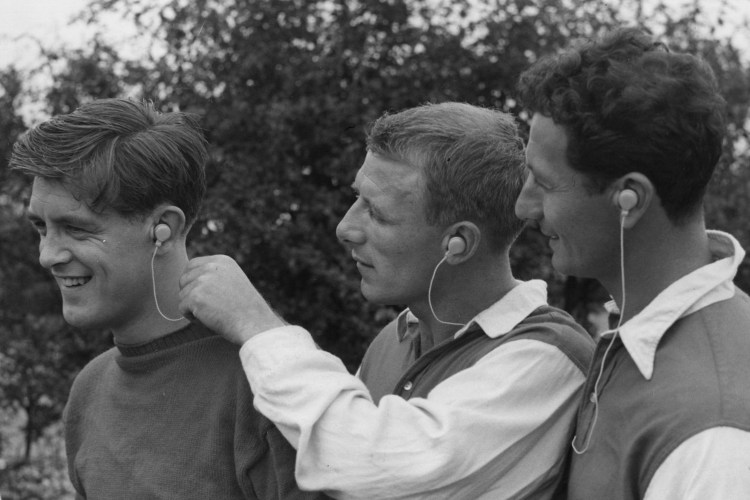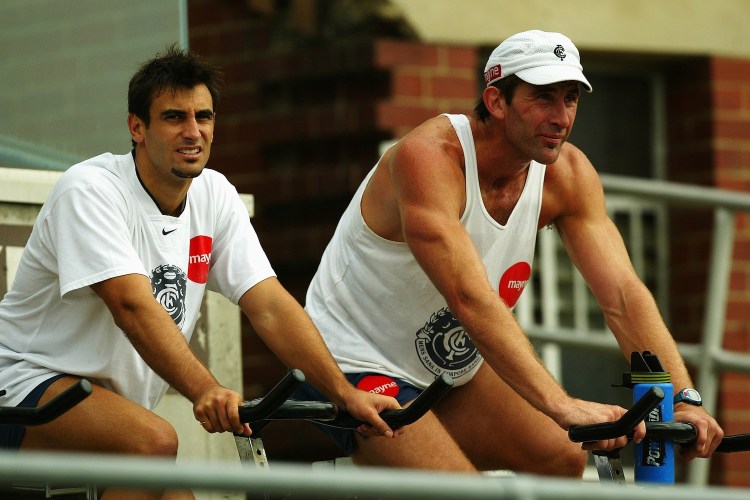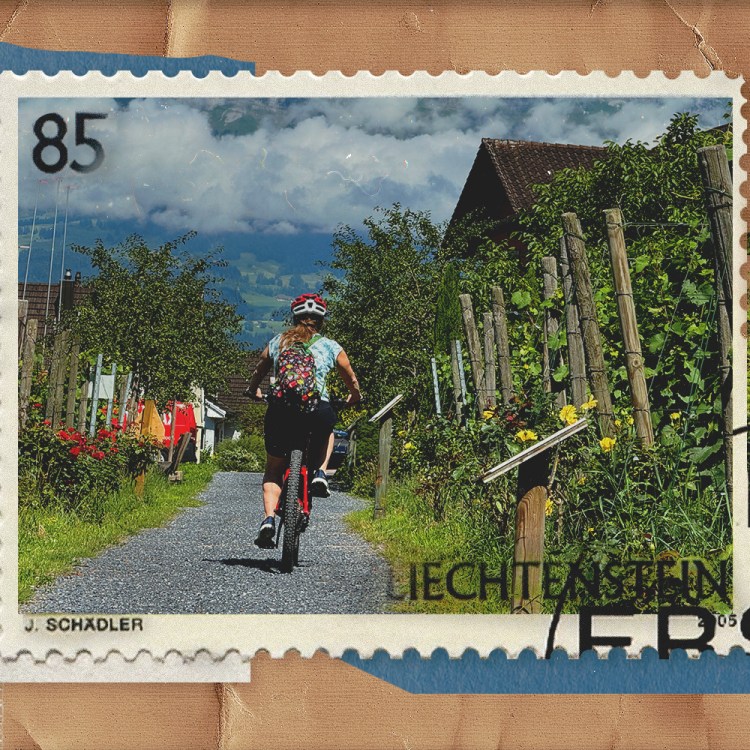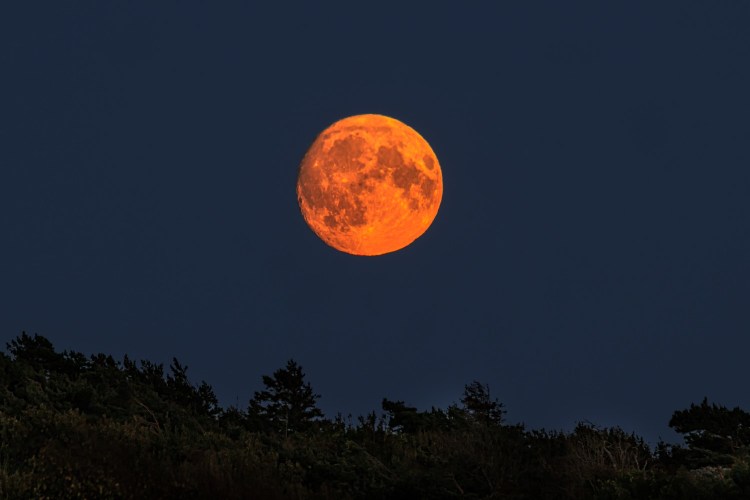“I think there’s something in the water,” my mom says, gesturing out the window of the Greg Mortimer, Aurora Expeditions’ 120-passenger expedition ship. But it could be anything — a piece of ice, a bird, driftwood, shadows — and it quickly floats by into the distance.
It’s early morning during breakfast on our first full day onboard and already everyone is on the lookout for polar bears. We embarked yesterday in Longyearbyen, Svalbard’s diminutive main town, with relatively few expectations for this relatively unknown territory. Last night, we had a series of briefings from the expedition team encouraging us to remain flexible and open-minded. Expedition leader Christophe Bouchoux reminds the passengers that expedition cruising, particularly in the Arctic, requires us to “adapt to the reality of nature.” The briefings also included a talk on polar bear safety, so this morning all anyone can think about is setting their sights on one of the iconic white figures. Or yellow, technically, as someone explains about the bears’ unique coloring.

“There’s a bear swimming!” Someone shouts this from across the dining room and a group of people, including a member of the expedition team, run up to the windows near our table. The news is passed on like gossip, fast and without hesitation, and soon the ship’s captain is slowing down so we can go to the decks to get a better look. We can’t follow the bear, and the ship has to stay at least 200 meters away while he’s swimming, but the captain can rotate us and move slowly along the fjord. And soon the coveted ursine is clambering onto the shore, offering a view that most have only ever seen in zoos. It’s like seeing a celebrity. “That’s him,” I keep thinking, as if I’ve laid eyes on Tom Cruise.
Although there are about 3,000 polar bears in and around Svalbard, it’s possible to go there and never see one. Longyearbyen, which attracts tourists both in summer and during its freezing polar night, has a safety perimeter for the inhabitants and visitors. If you leave it, you must be armed and trained to protect both yourself and, more importantly, the bears. Most of them aren’t found on the archipelago, but rather on the surrounding sea ice, which is decreasing each year due to climate crisis. There’s an adage repeated by the expedition team on the Greg Mortimer about polar bears: “They can be anywhere, but they’re not everywhere.”
But over the course of 12 days in Svalbard, sailing around its rocky islands and shimmering fjords, we see nearly a dozen polar bears, both from afar and from a relatively close distance. At the end of the cruise, the expedition team’s resident photographer Adrian Wlodarczyk confirms, “You’ve seen more polar bears this week than most people see in a lifetime.” In fact, the cruise before us saw only one and he was asleep on a hill, barely visible to the naked eye.
Much of it luck, as it turns out, but there’s also some skill involved. The passengers quickly learn what to look for — a specific yellow hue that stands out from the snow and rocks — and many spot the bears before the expedition team does. Once seen from the ship, there are careful rules to follow to ensure the animals are protected, set out both by the Svalbard government and by Association of Arctic Expedition Cruise Operators (AECO). It’s essential not to stress the bears or to interrupt their natural engagement with the world around them. On land, the expedition team are armed with rifles and have to stand guard while we explore in a designated area. Legally, if a polar bear gets within 30 meters of a guest, they must shoot to kill. And any polar bear death is treated like a murder and investigated carefully. But that’s the worst-case scenario and, ideally, avoided — although it has happened, including in 2022 after a bear attacked a campsite in Sveasletta.
A Journey to Svalbard, the World’s Northernmost Permanent Settlement
Why visiting the extreme northern edge of the world is an obligatory tourist experience“This is what we are not getting straight when we are coming here,” Bouchoux explains during the polar bear safety briefing. “We are thinking, ‘Oh this polar bear is dangerous to people.’ But even though I love you all already, I’m not too worried about your safety when it comes to polar bears. Because we have 10 rifles here with bullets as long as my fingers and these rifles work and we have trained with them. So I’m not too worried that this polar bear could do any harm to you. But we are posing a big danger for the polar bear. We are a danger to him.”
The caution around polar bears extends onto the shore. Expedition cruising typically includes daily landings, taken on Zodiacs rafts, for hiking or exploring. But in Svalbard you can’t land until the team checks thoroughly for bears. If it’s foggy, which it often is, you can’t land at all because the bears are nearly impossible to see. One morning, Bouchoux intends to take us for a walk along a fjord, but the plans are altered last minute because there is a polar bear asleep on the opposite shore. Instead, we load into the Zodiacs and quietly try to sneak a peek, although he barely moves. On another day, a bear is spotted on a small island as we sail by. The team decides to bring out the Zodiacs and we closely observe two polar bears, one of which is feasting on the carcass of a walrus. It’s a once-in-a-lifetime moment, occurring by happenstance.

Later, Bouchoux tells me that every action taken by the expedition team during the careful observation was meant to ensure the wildlife were not impacted by our presence. “Some bears have different behaviors because they have different personalities and they have they are in a different state of their life,” he explains. “These two were rather well-fed and in good health. But sometimes they are not healthy and sometimes they are starving, so they might be more sensitive to our presence, even though we are far. So in that case, if I see that the polar bear is stressed and he is really not happy that we are here, I will leave immediately. Even if it’s the only polar bear the passengers will see.”
After a few days of fog, which breaks open only long us for us to see a walrus huddle, with more than 200 grunting walrus packed together along a thin island, Bouchoux sets course for Kvitøya, Svalbard’s more easterly point. It’s known as the “White Island” and it’s the most remote, isolated place I’ve seen outside of Antarctica. As we approach the curving ice wall, passengers on upper deck begin to point out a polar bear on the shore. By this time, we’re pros at finding them among the grey and white rocks. Soon, we see another. And then a third. By the time we’re in the Zodiacs, keeping a quiet distance in the water, we can easily observe all three in one camera frame. It’s extraordinary — and unusual. Polar bears are loners, typically, and they rarely interact except when it’s time to mate or mother their young. We hold a collective breath as two approach each other and circle.
“This is nature telling us that she decides.”
This moment, as cinematic as it is, wasn’t planned, nor could it be. John Kernan, a member of the expedition team who has been coming to Svalbard for decades, says it’s simply a matter of being as prepared as possible. Polar bears wander, with no specific territory. They can swim for miles. They hang out on sea ice, on rocks or along the sand. Sometimes they’re blocked by boulders or cliffs and they’re nearby but out of sight.
“The best that we can do from knowing conditions, knowing the location and perhaps knowing polar bear’s tendencies is to put ourselves the best we can in a position to perhaps maximize our opportunity to have experiences with polar bears,” Kernan says. “But all the best laid plans don’t always work. When we go to Antarctic we know where the penguins are. That’s not the case with polar bears.”
Although polar bears are the main attraction for many travelers to Svalbard — and understandably so — they’re not the only draw. The archipelago, which is part of Norway, is teaming with a diversity of wildlife. On our cruise, we see puffins, Arctic fox, reindeer, beluga whales, an Arctic jellyfish and a staggering cliffside colony of hundreds of Brünich’s guillemots. It’s a place filled with stories, primarily of expeditions to the North Pole, many of them ill-fated. Because of its northern location (Longyearbyen sits at 78 degrees north), Svalbard is a frontline for climate crisis. Its more than 2,100 glaciers are receding, and the sea ice barrier moves higher every year. Visiting Svalbard, particularly on an expedition cruise that travels to its far reaches, is impactful because it reveals how nothing on the planet is isolated from anything else.
“It is really moving,” explains Marcos Goldin, an expedition team member, geologist and coordinator of the Greg Mortimer citizen science program. “We try to make those encounters as truthful, as real, as connected to the environment as possible. Those things create this new sense of awareness and this new perspective. We come all of us from our daily lives with very different rhythms and very different expectations, and we come here and we tune into this place and I think that’s powerful. Attention is a very challenging thing to get and once we are in a journey for a number of days and we get to spend all this time together that has a great power. It’s not the same if you read only something. A lot of our travels anywhere, if it’s on a ship, if it’s not a ship, give us those new perspectives.”

Part of this perspective, certainly, is how our actions at home impact the world around us, including the polar bears, which are considered a “threatened” species in the U.S. and as “vulnerable” on the IUCN Red List. Many of the remote locations we visited in Svalbard were covered in trash that has been washed up by currents. Behind the polar bears, even in these rarely touched locations, plastic was apparent everywhere. One of the Goldin’s citizen science programs, a priority for Aurora Expeditions, included a beach clean-up, with several bags of garage and plastic removed by the passengers and expedition team. But is it enough to protect the bears and their fellow wildlife? If I’ve taken anything from my experiences cruising in the Arctic and Antarctic, it’s that the world is not bigger than any one of us. It may take corporations and governments to enact real change, but we too can be part of the solution.
“Something that is very overarching to everything is, of course, mitigating climate change,” Goldin says. “That is one of the things that would contribute to protecting the polar bears and to many other things. So talking about the subject and addressing changes that you want to do your personal life or in your decision-making towards that is good. You can also be involved with conservation efforts and NGOs that work towards the study of polar bear habitats and populations and so on. Everything we do is all linked.”
By the end of the cruise, as the Greg Mortimer completed its circumnavigation of Svalbard, there was a shift, even if not everyone felt it so explicitly as I did. We had seen the bears, up close, living their natural lives, and it’s hard to walk away from that without considering the planet and its precarious circumstances with slightly more concern. Some people left with photographs, taken precisely on long lenses, and some left with memories, having set down their phones to simply watch. I left with both, although the photographs pale in comparison to the real thing. Not everyone will be so lucky when they go to Svalbard, or perhaps they will be even luckier. No cruise will be alike, which is the beauty of expedition. It’s as Bouchoux reminds us one particularly foggy morning: “This is nature telling us that she decides.”
This article appeared in an InsideHook newsletter. Sign up for free to get more on travel, wellness, style, drinking, and culture.








